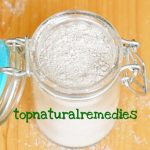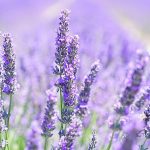HOW TO GROW LAVENDER AT HOME TO RELIEVE STRESS AND ANXIETY
With its beautiful foliage and sweet-smelling flowers, lavender is one of the most popular herbs in the world. It requires low maintenance, which makes it every gardener’s dream. Health.
Growing lavender at home couldn’t be easier as this plant requires very little care and attention.
On the other hand, you get numerous health benefits including relief from stress, anxiety and headaches. You can easily improve your sleep quality and give your bedroom a spa-like sense by placing a pot of lavender in your bedroom. Health.
Contents
Growing Lavender Indoors
Although there are different kinds of lavender, English Lavender (Lavandula Angustifolia) is probably the most popular choice for planting.
The plant, known by the name L. Officinalis or L. vera, is available either as a seed or as a young plant in most gardening centers.
These are some varieties of English Lavender you can choose from:
Hidcote: This variety has gray leaves and lovely deep purple flowers. It’s probably the most aromatic variety of lavender, which will fill your house with its amazing scent. Health.
Imperial Gem: This lavender type has bright silver leaves and stout purple flowers, which makes it great for decorating the center of your dining table or as a bouquet.
Munstead: This variety is great for indoors because it’s rather compact. It has bright green leaves and bluish flowers. Plus, it’s heat tolerant.
Twickel Purple: With its strong, bright scent, long purple flowers, and gray/ green foliage, the twickel purple is the best choice if you want a low-height plant.
Mini Blue: As it’s the smallest of all lavender varieties, the mini blue is ideal for small rectangular flower pots. It’s highly decorative because of the abundance of flowers it gives. Health.
Planting
Lavender is a perennial plant native to the dry Mediterranean coast. It depends on sun exposure for at least 8 hours a day, great drainage and good air circulation. It becomes drought tolerant when matured.
That’s why it’s important to water the base only, not the foliage and let the soil dry out between watering.
It’s also advisable to plant lavender in a large flowerpot that has a drainage hole and plenty of loose gravel at the bottom in order to improve air flow to the roots and thus prevent rotting. Although the plant is relatively small, it actually has a large root system that can get suffocated if planted in a small pot. Health.
A mix of peat, vermiculite, and perlite is most beneficial for lavender. Regular potting soil will also do.
Pruning
It may require low maintenance, but lavender asks for annual pruning. Unless you regularly trim it, it gets woody over time because it’s a semi-shrub in nature.
It’s also recommended to pinch off the tips of a new plant when growing and after blooming to promote new shoots and shape. Health.
When your plant is about a year-and-a-half old, trim 2/3s of it once a year. As a general rule, prune down to the 3rd node above the old wood.
Keep In Mind
Lavender has a number of blooming periods, which means it doesn’t hold the flowers all year long. But, even lavender’s foliage is scented meaning you can still enjoy the sweet smell of the herb even when it’s not blooming.
It’s important to keep in mind that lavender can produce a very strong smell when blooming, which can easily affect people prone to scent-related headaches.
If you want to make a bouquet using lavender flowers, wait until the buds are half open before cutting. You can also make a dried bouquet, but don’t cut the flowers until 3/4 of the buds are open. Health.
Note: Lavender should be placed outside reach of pets as it’s toxic to animals. Also, keep it away from children.



